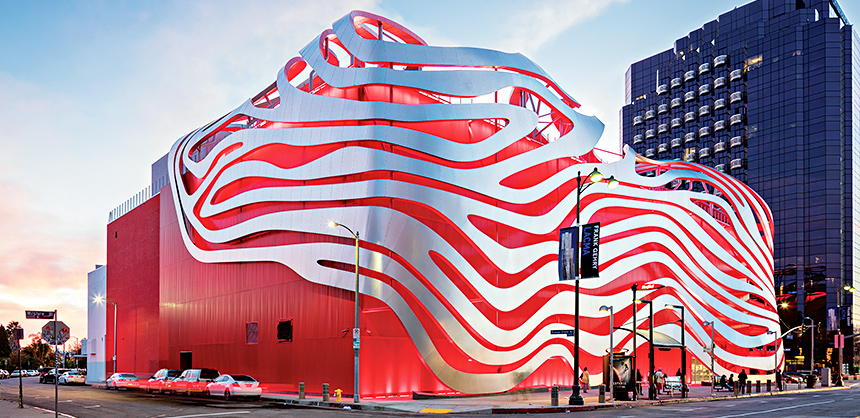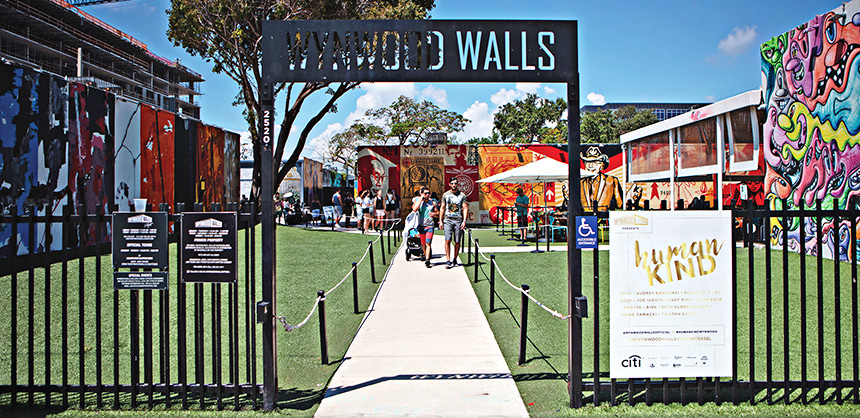Memorable SpacesApril 3, 2023
These Unique Meeting Venues Offer a New Perspective By Nancy MuellerMemorable Spaces
These Unique Meeting Venues Offer a New Perspective
The Petersen Automotive Museum in Los Angeles. DepositPhotos.com
The pandemic-pause provided planners with an opportunity to reevaluate how best to create meaningful events. Now, with live meetings on the rise once more, the time is ripe to dust off the damage of the industry’s slump over the past few years with a fresh perspective on all things related to meetings — concept to content creation, budgeting and attendee engagement, event technology and post-event follow-up.
For starters, insurance and financial planners should consider this key consideration: the choice of a venue that will support the client’s vision, purpose, as well as drive attendance.
Benefits of Hosting Events in Unique Venues
Reimagining the typical meeting or conference venue beyond what attendees have experienced previously opens up new possibilities for team building, incentivizing, increasing morale and more, say savvy meeting planners.
For Maggie Pearson, president of Evergreen Meeting Management, “Nontraditional venues can breathe life back into events.” For example, Pearson cites an event held in a performing arts theater for 100 C-level attendees that included a catered dinner on the stage of the theater with a jazz trio playing.
“They enjoyed getting to be onstage,” she explains. “It showed them a different perspective of the theater and they felt special to be in a place most people couldn’t go. Having access to see the front-of-house and the back-of-house of the theater was a big part of the draw.”
Based on the overall positive feedback of the meeting, Pearson would use the same venue again for another event while acknowledging: “I’ve done this event in three locations now and each time we’ve used a new venue. In Minneapolis, we used a mansion that we rented out for the evening and in New Orleans we are using the River City Venues.” (It offers a versatile selection of event spaces that can accommodate up to 10,000 attendees.)
Over the last five to eight years, CMP Julie Wong, president of The Event Concierge, has planned events in venues ranging from airport hangers and historical mansions to a car collection warehouse and car museum for up to 150 attendees. Like Pearson, Wong says attendees favor the unique venue experience, and having an insider perspective. “Seeing something that not everyone can see or experience is pretty neat. A museum open only for them or a back-of-house tour to see how things work is something they will talk about for years,” Wong says, adding that unique venues allow for activities and networking.
“It keeps the meeting interesting, inspiring at times, attractive to attend and can be a topic of discussion for attendees,” she says. “It also is an option if your meeting doesn’t need sleeping rooms and the venue is in your local area where attendees don’t travel.”
To Wong, a unique venue may simply mean using typical meeting spaces in a different way, hence the value of having a flexible design.
In Pearson’s case, having access to a variety of areas at the same venue is an added benefit. She says, “We used all of the different areas of the building for the event. We started in one area and moved into the theater and the stage.”
Moreover, Wong says, “Getting people off site, to me, ups the value of what they get for coming to the meeting. They get to see something cool and experience what the locals do.”

In the heart of multicultural Miami, Wynwood Walls offers 8,500 sf of outdoor space surrounded by murals filled with vibrant street art. Photo courtesy of the Greater Miami Convention and Visitors Bureau
Challenges Worth Considering
While the benefits of hosting events in unique venues are many, planners should also consider the potential challenges based on the specific needs of their groups, says Pearson and Wong. For example, “ADA accessibility to the stage could have been an issue for someone in a wheelchair,” says Pearson, referring to the group who held its event in the performance theater. In order to bring them on stage, she says, they would have brought them up from the back of the room.
There have been other challenges Wong has faced in planning events in such venues. Such issues require preplanning to minimize potential problems. She mentions audiovisual access, loading in, getting coach buses in and turning around, hours-of-operation versus closing to set up for the event and more.
Meeting Planner’s Checklist
Pearson is a strong proponent of preplanning, saying, “Every city has unique venues. It is important to talk to your partners about the location to find out what could be a good fit.”
She adds, “You really should go into it with a checklist, so you don’t forget specifics for your group. Is the location ADA accessible, is there appropriate art on the walls or entertainment that fits the culture of your group? Does the venue have everything you need or do you need to bring in more support?”
Wong recommends planners consider asking about items that a traditional venue may offer and ensure the unique venue offers it, can get it or that they understand meetings and planning a meeting. She says, “Some venues, such as a warehouse space, may offer meeting space as an additional revenue stream to their business and they may not know how meetings work or what the needs are.”
Ultimately, Wong suggests, planners should avoid unique venues if they’re not used to hosting events, “unless the planner has the time and skill set to discover and uncover any planning or logistical details that the venue may not be aware of.”
Best Practices
When it comes to unique venues, Pearson says planners should visit the venue beforehand and discuss what other events have taken place there. “Ask about the communication plan of the venue,” she says. “How do they describe your event to their staff to make them prepared for your event? Off-the-wall places may not be as prepared for your type of event.”
Wong gives this tip: “Envision the event from start to finish, with planning, execution and even clean up. Discuss those details with the venue to see if they have answers, solutions or are willing to work with you.”
For Wong, items to think about adding to the meeting planners checklist include: noise ordinances; space for buses; AV capabilities; ADA compliance, especially historical venues; liquor licenses, and opening- and closing-hours for set up and tear down.
“Space and capacity can also be a challenge if your meeting grows because the venue attracts more people,” she says.
Wong adds, “I believe once you’ve planned a few, you become better because you start to really think outside the box when it comes to planning the meeting.” I&FMM










